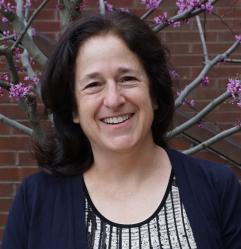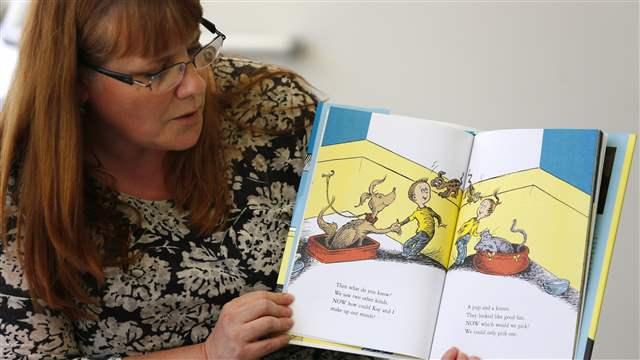When we think of elementary and secondary schools, many of us picture students in classrooms taught by lone teachers, overseen by a principal. In reality, many adults work in schools other than teachers and principals. It may be surprising to learn that there are as many non-teaching adults as there are teachers in U.S. public schools. These adults play roles from supporting students with special needs to coaching teachers to community outreach to maintaining facilities.
Some non-teaching adults help students learn and contribute to fulfilling our goals for school success, but others deal with unproductive requirements or are hired because of poor policy choices that distract schools from their focus on students. As the Every Student Succeeds Act (ESSA) devolves decisions to states about what to hold schools accountable for and how, nothing is likely to be as important at the local level as human resource decisions.
To paint a picture of adults in schools: among academic staff, certainly teachers are central, but librarians (or library media specialists), English as a Second Language or bilingual teacher aides, special education instructional aides, and a variety of other instructional aides also work directly with students. Among administrative staff, schools have principals, but they also have vice or assistant principals, secretaries and other clerical support staff, instructional coordinators and supervisors such as curriculum specialists, and a variety of non-instructional aides. Schools also employ health services staff such as school or guidance counselors, nurses, social workers, psychologists, and speech therapists; and they employ basic services staff such as food service personnel, custodial, maintenance and security personnel, and special education and library media non-instructional aides. Many more adults work in the central office of school districts, especially in large school districts.
Salaries and benefits are by far the largest expenditures on schools, accounting for 80 percent of current operating expenses.[i] With extra funds, schools can reduce class size, or pay existing teachers higher wages, or they can hire non-teaching staff for a variety of purposes. On average, schools employ approximately one full time academic teacher for each group of 16 students. This is smaller than the average class size because teachers have preparation time and other time in school when they are not directly teaching students. While fewer non-teaching academic staff, such as teacher aides, work in schools, there has still been about one for approximately every 27 students. In comparison, one administrative staff works with every 83 students, one health staff works with every 161 students, and one basic services staff works every 73 students, on average. These numbers have been relatively constant over time, with the number of students per teacher dropping in the 1990s from approximately 17 to 16, then dropping to 15.3 in 2008 but returning to about 16 by 2011.The number of non-teaching academic staff showed an even larger drop in the 1990s but also remained more constant in the more recent years, though the federal data on non-teaching staff is not as up-to-date.[ii]
The adult composition, of course, is not the same in every school. Smaller schools, rural schools, and those serving a higher proportion of students in poverty tend to have more teachers per student, more non-teaching academic staff per student, and more administrative staff per student. There is little notable difference in staffing between urban and suburban schools, but middle schools and high schools have many fewer non-teaching academic staff than do elementary schools. But high schools tend to have more administrative staff per student than do either elementary or middle schools.[iii]
Policy decisions affect school staffing. There are large differences across states in the number and types of adults in schools. As one example, Vermont, North Dakota, and Wyoming employ almost twice as many teachers per student as Utah and California. The west employs far fewer teachers (one per almost 18 students, compared to the northeast with one per twelve students). Regional differences aren’t so large for non-teaching academic staff or administrative staff but they are for health and basic services. The west employs one health staff for just over 200 students, while for the northeast that number is 110. The comparisons for basic serves are 106 and 61.[iv]
Some policies that we might think would affect staffing decisions do not appear to explain very much of the large variation across or within states. For example, while states that require collective bargaining for teacher contracts tend to spend meaningfully more per pupil on public education, their staffing ratios are approximately the same, as are their teacher salaries relative to other salaries. Similarly, when districts have received an influx of funds from school finance litigation, their spending, on average, has increased but their relative employment of different types of adults has not consistently altered.[v]
While some policies have little effect on which adults work in schools and in which roles, others clearly do. In San Diego, almost two decades ago, Alan Bersin and Tony Alvardo famously worked to replace classroom aides with peer coaches for teachers on a large scale.[vi] More recently, the District of Columbia Public Schools hired approximately one outside observer for each 100 teachers in the district for the purpose of evaluation. Five states provide subsidies specifically for elementary school counselors, increasing the number of these staff members in schools.[vii]
We have some evidence that non-teaching staff can be important for students and, thus, that our focus on improving schools should not be limited to thinking about teachers. While a large-scale study of class size in Tennessee found no benefit for kindergarten students of having a teacher’s aide, a national study of school counselors found that they reduce problems with students’ physical fighting, class cutting, stealing, and drug use.[viii] Non-teaching staff can also help to improve teaching and student learning through the coaching and evaluation teachers.[ix] It is a mistake to conclude that the best way to improve schools is necessarily to reduce the number and quality of non-teaching staff and focus only on teachers. The devil is in the details of who does what for whom, rather than in the broad categorization of staff as teachers or non-teachers.
These studies are compelling but they are not robust enough to use to determine the optimal staff composition for each school. Local decision makers have information on needs and hiring opportunities that likely put them in a better position to make these choices, though clear local under-investments in staffing areas can be reduced with some higher-level policy instruments such as funds for counselors or other staff that local decision makers may not be considering.
While explicit policy choices about staffing intended to enhance student outcomes, such as the decision to hire more teacher coaches or evaluators, are important, so also are choices that affect staffing indirectly. When state or federal policymakers ask schools and districts to complete detailed documentation with input from a wide range of stakeholders, such as the Local Control and Accountability Plan (or LCAP) that is part of California’s new finance and accountability system, they are requiring new school staff or a reallocation of time for existing staff. This particular policy may be beneficial in the long run—the jury is certainly still out—but the adult time costs are large and should be considered explicitly. New standards and the resulting professional development and material development create similar costs, though again, may have large long-run payoffs.
Adults in school are our greatest resource for students. Meeting the needs of current students and the potential to improve schools for future students relies on having and using adult time well to reach our goals. As we consider the opportunities provided to states by ESSA for better and more complex approaches to holding schools accountable and supporting their improvement, we should keep the human resources implications at the forefront of our minds.
[i] https://nces.ed.gov/programs/coe/pdf/Indicator_CMB/COE_CMB_2013_05.pdf
[ii] Calculations from the 2007-2008 Schools and Staffing Surveys by Christopher Candelaria and Susanna Loeb, and http://nces.ed.gov/programs/digest/d13/tables/dt13_208.20.asp.
[iii] ibid
[iv] ibid
[v] Calculations from the Common Core of Data by Christopher Candelaria and Susanna Loeb.
[vi] Darling-Hammond, Linda, et al. 2005. Instructional Leadership for Systemic Change: The Story of San Diego’s Reforms. Scarecrow Education: Lenham, Maryland.
[vii] Reback, Randall. 2010. “Schools’ mental health services and young children’s emotions, behavior, and learning,” Journal of Policy Analysis and Management 29(4): 698-725.
[viii] Krueger, Alan B. 1999. “Experimental Estimates of Education Production Functions,” Quarterly Journal of Economics 115(2): 497–532; Reback 2010.
[ix] See for examples: Kraft, Matthew A. and David Blazer. 2014. “Improving Teachers’ Practice across Grades and Subjects: Experimental Evidence on Individualized Coaching.” Working Paper; and Taylor, Eric S. and John H. Tyler. 2012. “The Effect of Evaluation on Teacher Performance,” American Economic Review 102 (7): 3628-3651.




